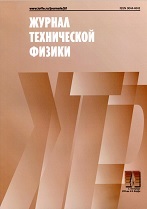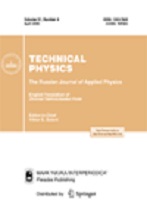|
This article is cited in 2 scientific papers (total in 2 papers)
Physics of nanostructures
The influence of technological regimes of synthesizing a solar furnace on the phase composition of TiO$_{2}$–CuO cermets and the optical properties of coatings on their basis
S. Kh. Suleymanov, V. G. Dyskin, M. U. Djanklich, O. A. Dudko, N. A. Kulagina
Institute for Material Sciencies of Academy of Sciencies of Republic Uzbekistan, Tashkent, Uzbekistan
Abstract:
We present the results of studying the effect of technological synthesis regimes of a solar furnace using the method of a partial metal reduction of one of the oxides on the phase formation of cermet composite materials of the TiO$_2$–CuO system. It has been established that the phase composition of the synthesized cermet composite materials depends on the carbon concentration, melting temperature and cooling rate. The dependence of the spectral-optical properties of selectively absorbing coatings on the production technology and properties of synthesized composite materials has been presented. It has been found that the coatings fabricated by melting in air with overheating at a melt cooling rate of about 10$^{5}$–10$^{{6}^\circ}$ C/s have the highest values of the integral absorption coefficient, $\alpha_{s}$ = 91.0–94.5%.
Received: 04.04.2017
Citation:
S. Kh. Suleymanov, V. G. Dyskin, M. U. Djanklich, O. A. Dudko, N. A. Kulagina, “The influence of technological regimes of synthesizing a solar furnace on the phase composition of TiO$_{2}$–CuO cermets and the optical properties of coatings on their basis”, Zhurnal Tekhnicheskoi Fiziki, 88:1 (2018), 63–68; Tech. Phys., 63:1 (2018), 62–66
Linking options:
https://www.mathnet.ru/eng/jtf6019 https://www.mathnet.ru/eng/jtf/v88/i1/p63
|


| Statistics & downloads: |
| Abstract page: | 44 | | Full-text PDF : | 12 |
|





 Contact us:
Contact us: Terms of Use
Terms of Use
 Registration to the website
Registration to the website Logotypes
Logotypes








 Citation in format
Citation in format 
